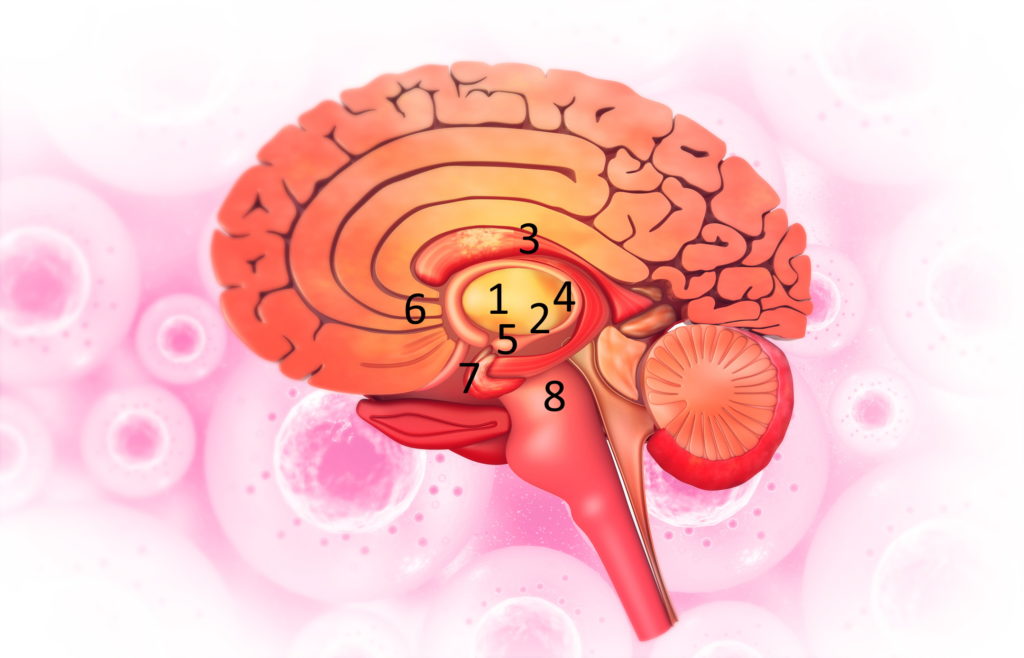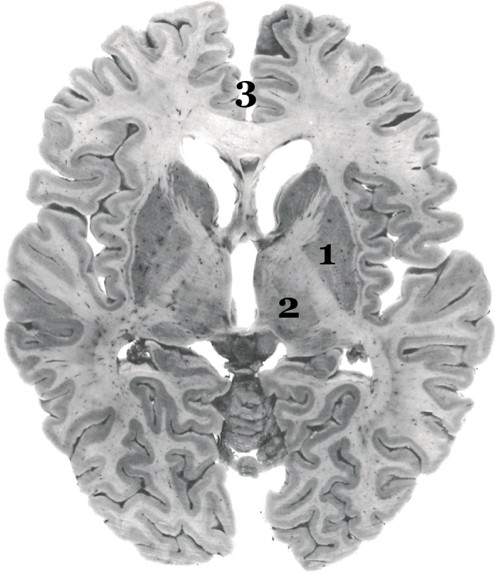The basal ganglia are areas of the brain located below the cortex, deep in both hemispheres of the brain . These nuclei are involved in the control of voluntary motor movements, learning and decision-making on the performance of motor activities.
Diseases that affect this region include Parkinson’s disease and Huntington’s disease.
They are surrounded by white matter from the cerebral hemisphere.
Divisions of the basal ganglia
- The striatum (caudate nucleus and putamen)
- The globus pallidus
- The amygdala
- The black substance
- The subthalamic nuclei


The basal ganglia receive almost all of their afferent signals from the cortex and send almost all of their efferent signals back to the cortex.
Functions
- Play the role of mediator between the motor centers of the neocortex and the motor areas of the brainstem
- Select the desired and desired motor activity and remove unwanted movements.
- Ensure an inhibitory role in motor control
- Inhibit muscle tone
- Adjust slow and continuous contractions (balance, body position, etc.)
- Regulate attention and individual cognitive processes
- Participate in motor planning and learning
- Help the cerebral cortex to perform subconscious and learned movements
Neurotransmitters
- Dopamine producing neurons (dopaminergic neurons) located in the substantia nigra (or substantia nigra) send projections to the caudate nucleus and putamen.
- GABA-containing neurons (gabaergic neurons) located in the nucleus caudatus and putamen, which send projections to the substantia nigra.
- Neurons that produce acetylcholine (cholinergic neurons) located in the cerebral cortex, which send projections to the caudate and putamen.
- Norepinephrine and serotonin neurons send projections to the basal ganglia.
